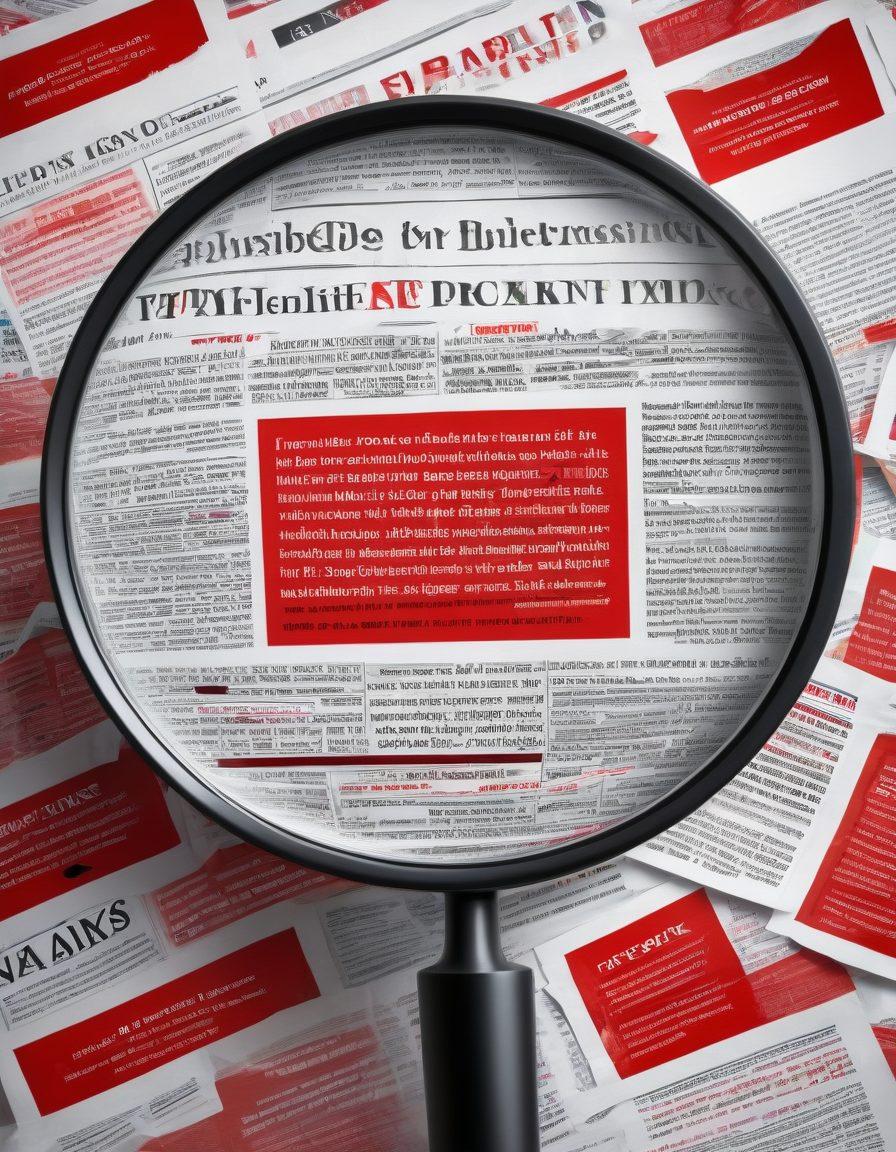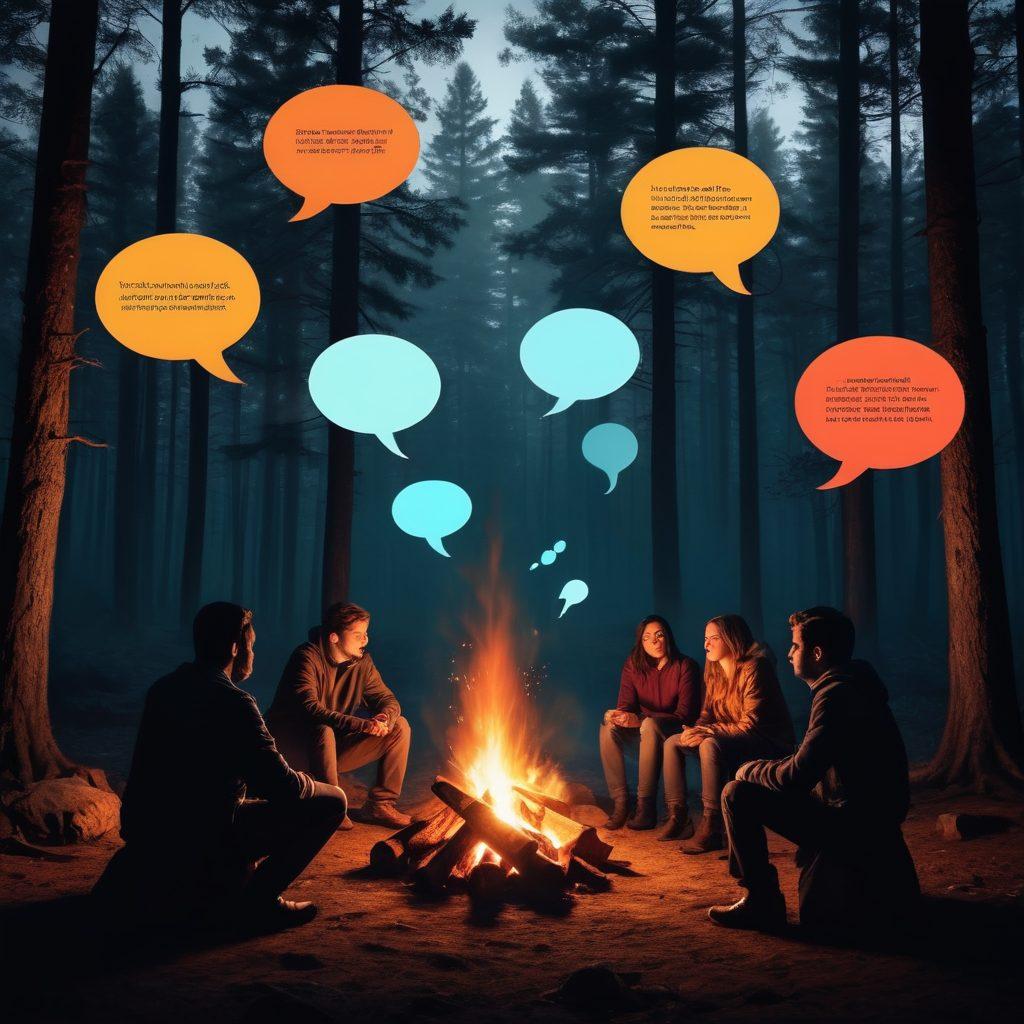Unmasking the Truth: How to Spot and Avoid the Most Intriguing Hoaxes and Scams
In a world overflowing with information—both genuine and misleading—it becomes increasingly challenging to distinguish between reality and deception. Have you ever found yourself caught up in a whirlwind of rumors, fake news, or stories that turned out to be just elaborate hoaxes? To navigate this realm of trickery, it’s essential to arm yourself with knowledge and a keen eye for detail. After all, how can we hope to combat fraud and misinformation without first understanding the nature of these clever deceptions?
Think of your favorite detective story. There's always that moment when the protagonist uncovers the truth behind seemingly innocuous events—a heart-pounding revelation that sets the stage for dramatic justice. The same can be applied to real life. To decode deception, we must first learn to identify the telltale signs of a hoax. Distinguishing falsehood from fact allows us to dissect urban legends, recognize spurious claims, and ultimately shield ourselves from scams that aim to exploit our trust. The next time you encounter a sensational headline, pause and ask yourself: Is this too good to be true?
A prime example lies in the phenomenon of hoax news that floods our social media feeds. Fake headlines, often designed with just enough sensationalism to pique our curiosity, might provoke a reaction—yet, if we remain vigilant, we can spot the warning signs. Is the story sharing dubious data or nonsensical statistics? Does it lack citations from reputable sources? In this era of misinformation, understanding the cornerstone of credible journalism is crucial. Remember what I always say: 'A critical mind is the best armor against deception.'
Another layer to uncover is the psychology at play behind hoaxes and scams. Why do people fall for ruses and conspiracy theories? Quite simply, they exploit our natural tendencies—our emotions, biases, and sense of belonging. There's a blend of fear, intrigue, and desperation that makes us susceptible. Ask yourself, what part of human nature is being targeted when you read about a miracle cure or a scandal that shakes your trust? By being aware of these tactics, you can develop an immunity against their charm, allowing you to engage with information more critically instead of becoming another victim of trickery.
Finally, it’s essential to maintain healthy skepticism while staying curious about the world around you. Embrace the idea that while myths can be entertaining, they often don’t hold up to scrutiny. Seek out reliable sources, question the motives behind questionable claims, and share only those stories that have been verified. By doing so, we not only protect ourselves from potential scams but also play a role in dismantling the webs of deceit woven around us. After all, being a discerning consumer of information is the best way to unmask the truth and safeguard against the illusion of modern misinformation.
Beware the Illusion: Essential Tips for Spotting Fraud and Misinformation
Once upon a time, in a digital landscape not so far away, the lines between reality and illusion grew increasingly blurred. With the rise of hoaxes and scams dancing flamboyantly across our screens, it becomes imperative that we arm ourselves with the knowledge necessary to discern fact from fiction. We ask ourselves: how do we navigate through the murky waters of misinformation? What strategies can we employ to unearth the truth? Join me on this quest as we uncover the essential tips for spotting fraud and deception lurking behind seemingly harmless content.
In a world inundated with information, it’s easy to get swept away by the tide of falsehoods. Just think of the last time you stumbled upon a news article that seemed too outrageous to be true. Did you check the source? Did the ‘facts’ line up with other reliable reports? One of the first steps in spotting a scam is considering the credibility of the source presenting the information. Ask yourself: does this medium have a reputation for journalism? Is the author backed by expertise? Remember, not every urban legend has a grain of truth; sometimes, they are nothing more than a tall tale woven from the threads of trickery and ruse.
Creating a mental checklist can prove invaluable when diving into the depths of online content. For instance, look out for spurious claims that lack supporting evidence. Watch for emotional triggers, as these are commonly employed to elicit a strong reaction. As they say, “If it makes you feel something too strongly, it might just be a fabrication.” Whether it’s a viral video or a sensational blog post, taking a step back and questioning the intent behind the information can help you recognize the guise of deception—before you get swept up in the rapturous illusion.
Additionally, let’s talk about the role of social media in perpetuating misinformation. With countless influencers and fast-fading facts making rounds, one could argue that we’re living in an age of hoax news. The next time you scroll through your feeds, consider the possibility of conspiracy behind exaggerated claims. Are these stories gaining traction for their outrageous nature? By identifying patterns in how misinformation spreads, you can position yourself as a more discerning consumer of content, and stave off the advances of any fraudulent narratives.
Finally, education plays a pivotal role in fortifying our defenses against potential scams. Empowering yourself with knowledge about fake news and the psychology of manipulation can transform you into a beacon for truth. Host discussions, engage your peers, and cultivate a community that values integrity over gullibility. So next time you encounter a piece of information that raises alarm bells, pause for reflection. Together, we can unravel the tapestry of misinformation and take a stand against the forces of deception, ensuring that the narrative we champion is one rooted in reality.
From Urban Legends to Spurious Claims: Mastering the Art of Recognizing Falsehoods
In a world overflowing with information, distinguishing between what is real and what is merely a fabrication can feel like navigating a maze without a map. Every day, we face the onslaught of **hoax** stories and **fake news** that aim to mislead and confuse us. Whether it's a wild **urban legend** circulating on social media or a **spurious claim** touted by a dubious website, the prevalence of such **deception** challenges our ability to discern the truth. So, how do we transform ourselves into savvy detectives, capable of sniffing out **deception** in all its forms?
Imagine sitting at a café, casually scrolling through your phone when you stumble upon a headline that claims, "Aliens Land in Your Hometown!" It’s tantalizing, isn’t it? But just as quickly as your heart races, a voice inside chimes in—Is it possible? Could it just be another **tall tale**? Recognizing the allure of an engaging story can often cloud our judgment. As the well-known adage goes, 'If it sounds too good to be true, it probably is.' The same holds true for wild **myths** that spread like wildfire; they play on our emotions, leading us to let our guards down before the inevitable **trickery** reveals itself.
So, how do we hone our skills in spotting **falsehoods**? First, it’s essential to cultivate a habit of skepticism. Before accepting any piece of information as fact, ask yourself: What is the source? Is it credible? Did the story originate from a **hoax news** site, or is it validated by reputable news outlets? In the age of **misinformation**, being a critical thinker gives us the power to discern between fact and **fraud**. It's all about digging deeper and questioning the narrative presented to us. Let curiosity be your guide!
Another approach to mastering the art of recognizing **illusion** and **ruse** is to engage in conversation. Share your findings and concerns with friends—discussing what you know can help unveil the layers of **pretense** that these **hoaxes** rely upon. Moreover, think about the psychological aspects at play; why do people believe certain **conspiracy** theories or urban fables? For many, these stories provide a sense of comfort or belonging, an explanation in an otherwise chaotic world. Awareness of this can empower us to empathize with those who fall prey to these tales while arming ourselves with the knowledge to avoid the same pitfall.
In conclusion, navigating the landscape of **fraud** and **deception** demands vigilance, curiosity, and robust critical thinking skills. As we learn to question carefully curated narratives and tackle **hoax stories** head-on, we not only protect ourselves but also contribute to the larger effort of combating **misinformation**. Armed with this understanding, let’s work together to unmask the blatant **falsities** and become advocates for truth in an era rife with **trickery**. Remember, knowledge is power, and the more you know, the better prepared you'll be to combat the illusions that surround us.


